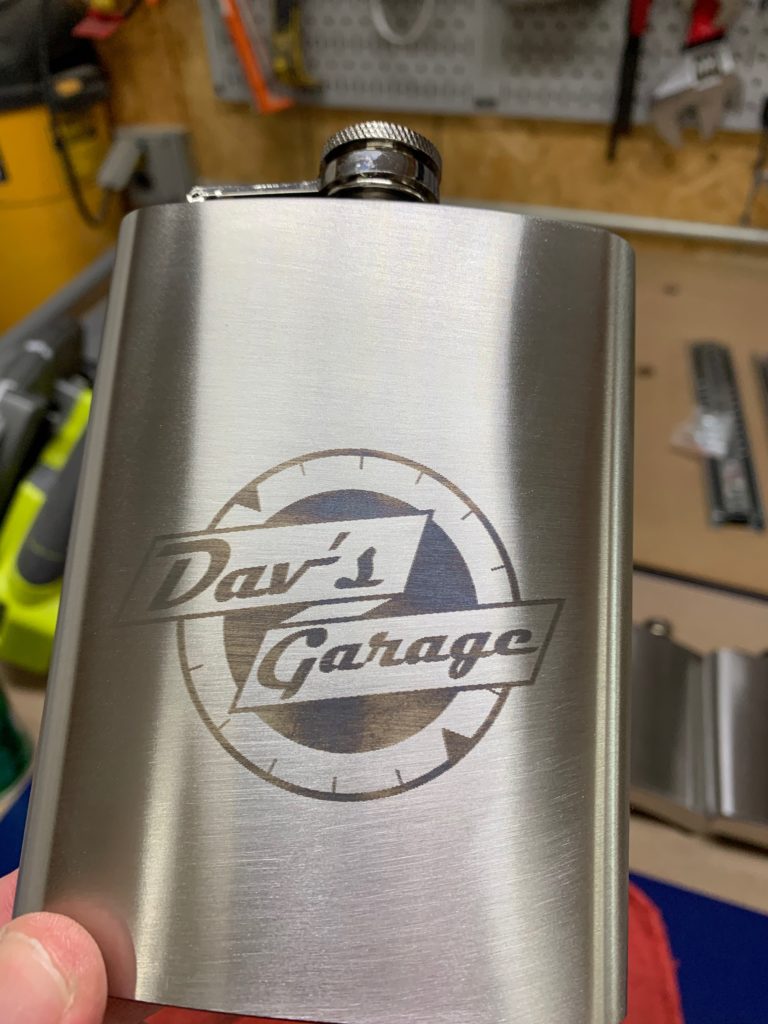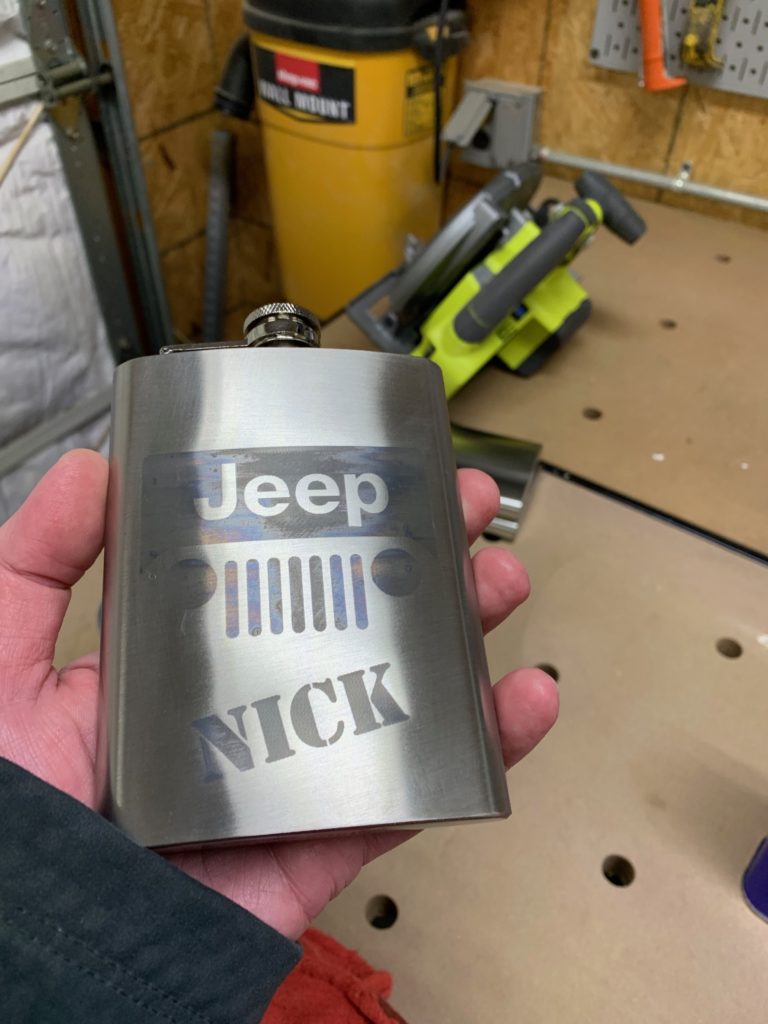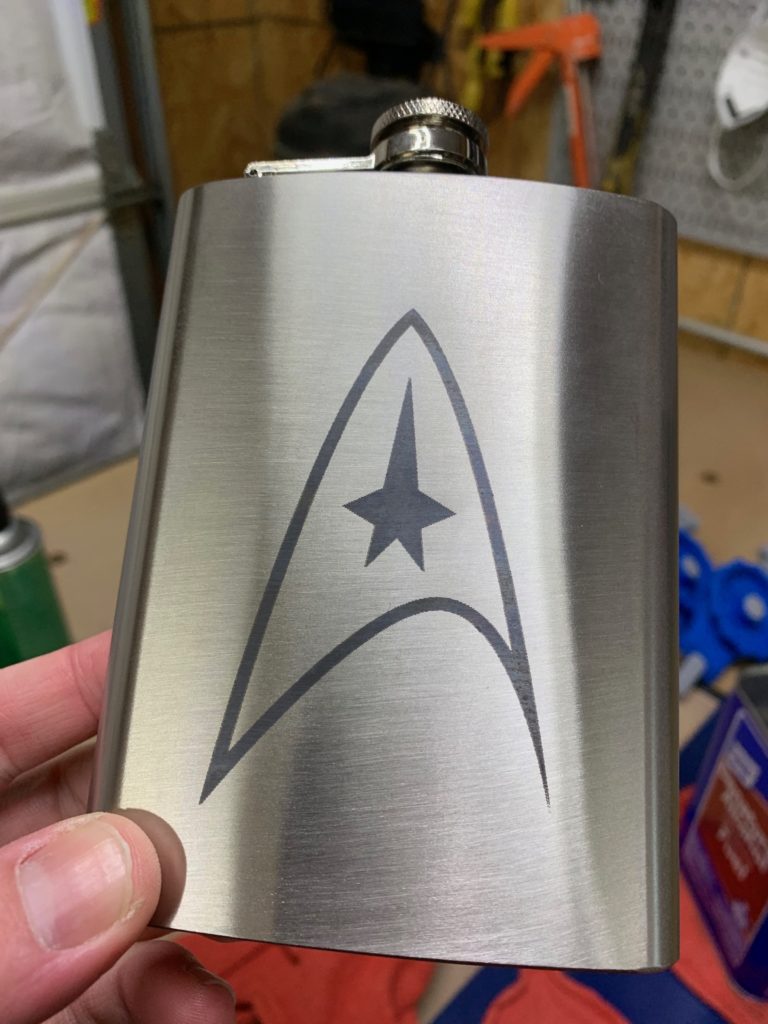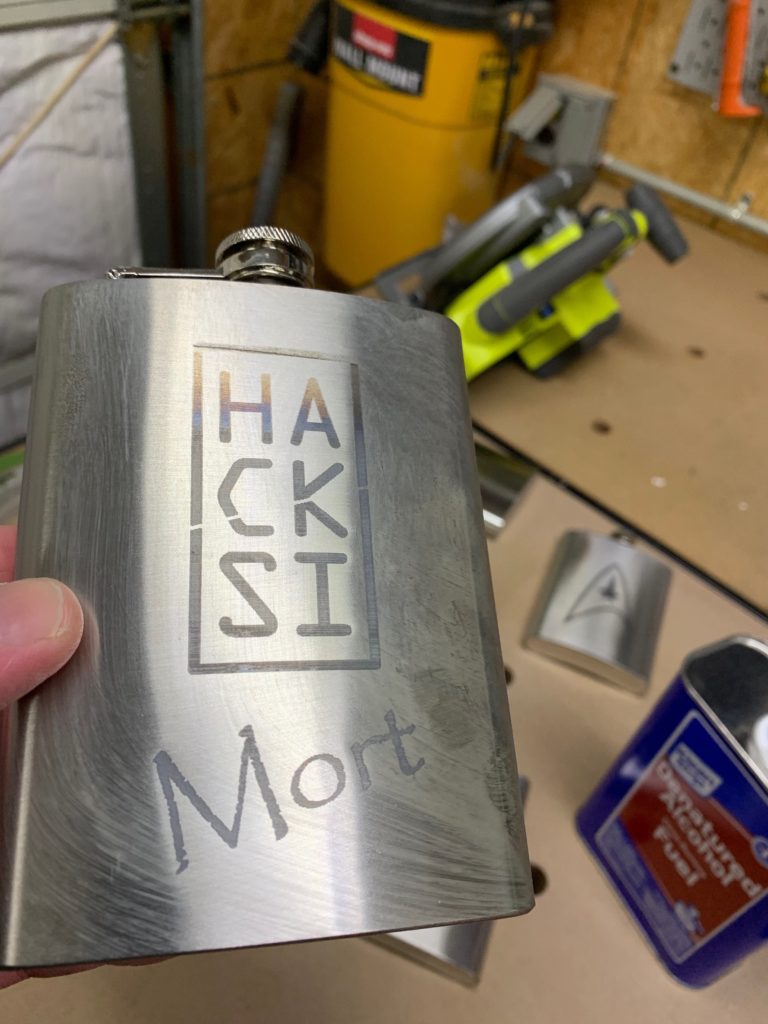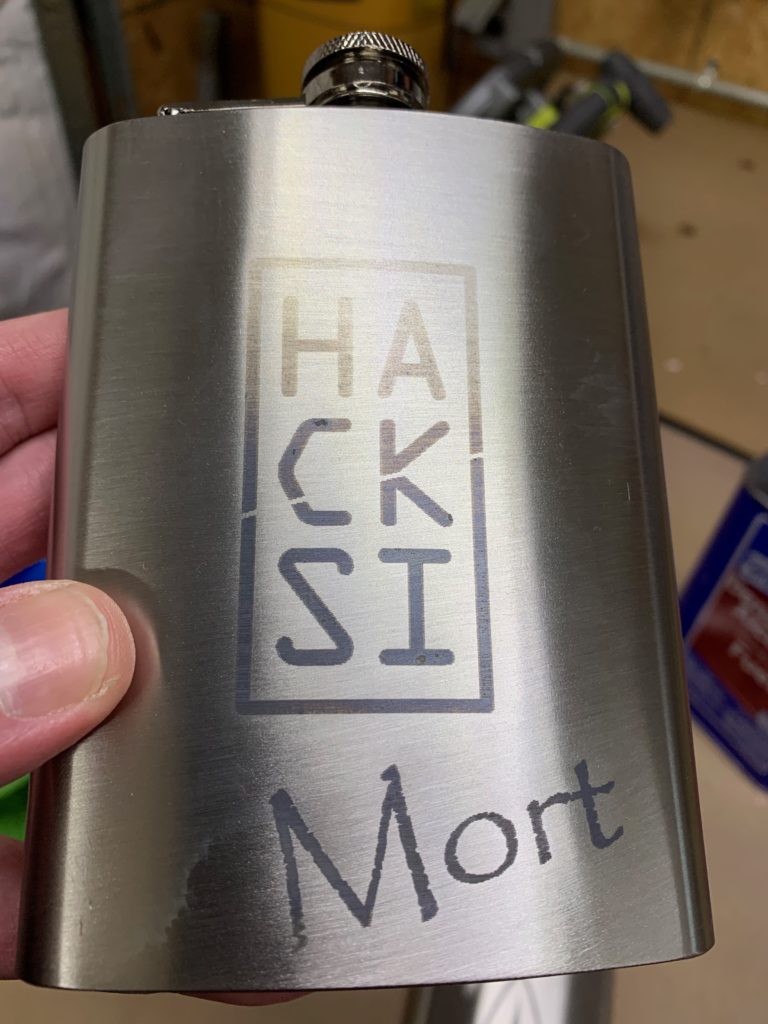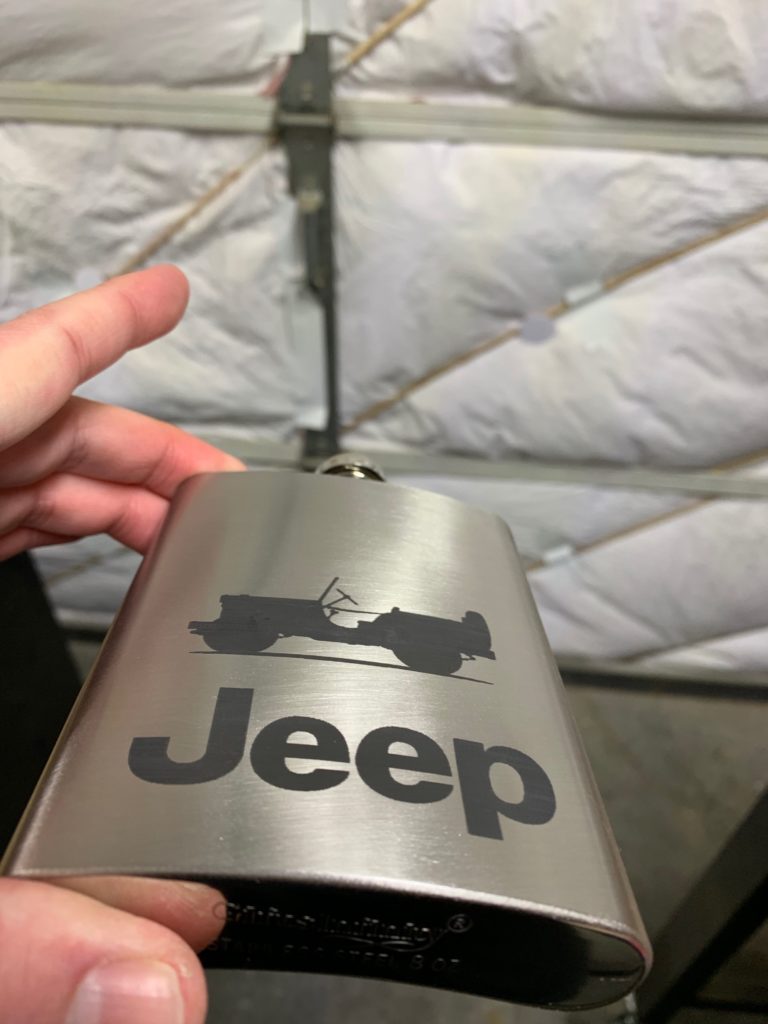In my shop I have the Flux Beambox 40w CO2 laser. Up until today I had used it to laser etch and cut wood & acrylic. The only metal work I had ever done with it was removing painted coating from aluminum.

Recently I learned that if you coat stainless steel with a chemical compound you could laser etch onto it and it would stay. Specifically the chemical is “molybdenum disulfide”. This can be found in “CRC Dry Moly Lube“. Of course I had to give this a try.
I ordered the CRC from Amazon and a batch of stainless steel drinking flasks. I then picked up some “Denatured Alcohol” at Walmart and I was ready to go.

The first step is to tape up the areas that you don’t want the Dry Moly to get on the material. For the flasks this was around the lid area. Then I sprayed a very thick coat of the lube onto the front of the flask. Making sure it was nice and thick as well as evenly coated.

I let this dry for about 10-15 minutes before dropping it into the laser. Now comes the fun part. For my first run, I set the laser to run at 50mm per second at 55% power. This actually turned out to work very well.

As you can see, some of the darker area at the bottom are a little light on the etching, I think this was because I didn’t put enough of the lube on. So I tried another design but changed up the settings. I went with 95% power at 50mm per second.

That didn’t work as I had expected, the darker areas at the top turned out super light and it created pretty large dents in the stainless. I think the metal is just too thin for that power of the laser.
Next up, I went back to using the 50% power at 55mm per second but this time I used 2-3 really good coats of the lube; making sure to cover it really well.

Now this one turned out absolutely beautiful. I’m really happy with how this one pops on the metal. At this setting I just need to dial in the proper amount of lube to apply. So I tried a few more times.
As the day went on I think I finally got the hang of the proper amount of lube to apply and the results show for themselves.
I hope you enjoyed this post!
